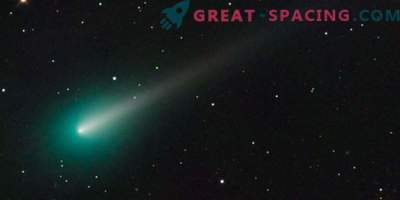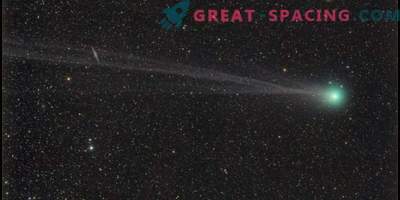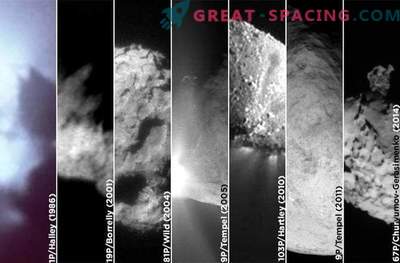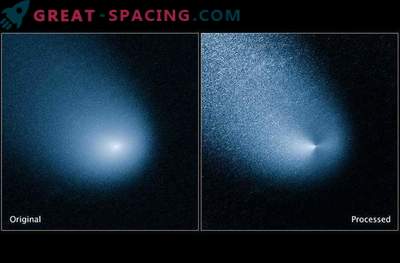
On March 21, a comet 252P / LINEAR flashed near the Earth during one of the closest comets, and the Hubble Space Telescope captured a cosmic wanderer flying off into the night, visualizing its rotating tail.
The 252P was known for several reasons. First, it was very close, secondly it was connected with another comet - P / 2016 BA14, indicating that they were part of the same object.
During this high-profile event, Hubble observed a comet approaching as it passed through the Sun, and on April 4th took a series of shots to determine the comet's tail 252P. Astronomers were able to immediately conclude that escaping gas from sublimated ice triggers dust into space. These visible light observations were made by the Hubble-3 wide-angle camera, when the comet was at a distance of 8.7 million miles, and the time interval between each animation frame is from 30 to 50 minutes.
Although the cometary nucleus is too small for Hubble's resolution, the rotational speed of the comet's tail gives us an idea of the rotational speed of the nucleus and, therefore, can reveal some information about the object's history, as well as the amount of volatile substances it contains.
Comet 252P / LINEAR will return to the inner part of the solar system in 2021, but will not come close to our planet in the foreseeable future.











































